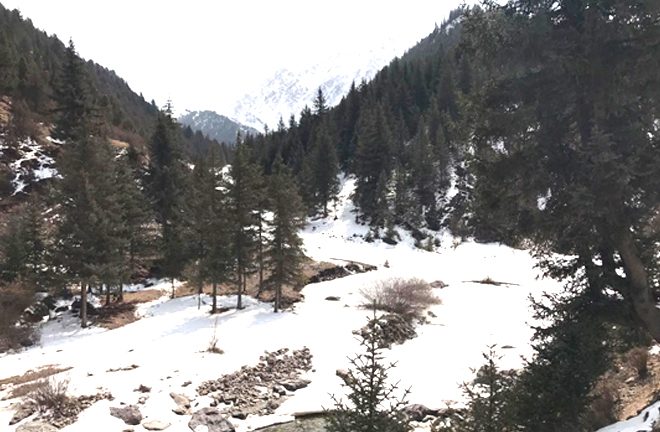Regional development vital to solving China’s contradiction

The picture shows Qilian Mountain Nature Reserve. Compared with eastern regions, central and western areas need to cope with more severe challenges in environmental protection.
Weighing in on the coordinated regional development strategy outlined at the 19th CPC National Congress, scholars concurred that the strategy is vital to solving the principal contradiction between unbalanced, inadequate development and the people’s ever-growing demand for a better life.
Since the 18th Party congress, regional development has become increasingly comprehensive, coordinated and open, yet imbalances remain.
Huang Kainan, deputy director of the Center for Economic Research at Shandong University, said the main problems are uneven development between regions and urban-rural imbalances within them.
The development of eastern areas far outpaces that of central and western regions, Huang said. The economic output of Kunshan, a rich eastern city in Jiangsu Province, totaled more than 300 billion yuan in 2015, exceeding the entire output of Qinghai Province, which generated more than 240 billion yuan.
“Even within developed provinces in the east, significant gap exists, like the southern and northern parts of Jiangsu, and eastern and western Shandong,” Huang said.
Regarding urban-rural disparities within a region, Huang said that rural infrastructure, social security and public services lag far behind developed urban levels. “Rectifying regional imbalances and narrowing the urban-rural gap within a region are essential to developing socialism with Chinese characteristics in the new era,” Huang said.
Despite remarkable achievements in regional restructuring, many problems are prominent, such as the large gap in infrastructure and public services, said Du Chuanzhong, a professor from the College of Economic and Social Development at Nankai University.
“When it comes to infrastructure construction, such key cities as Beijing, Shanghai, Guangzhou and Shenzhen as well as eastern regions boast abundant educational and medical resources due to their strong financial investment capacities, so the level of infrastructure is markedly more advanced than that in central and western regions,” Du said.
Huang called for efforts on supply-side structural reform and the rural revitalization strategy to compensate deficiencies in infrastructure and public services of less-developed areas. Moreover, it is necessary to eliminate institutional obstacles and local protectionism that impede regional integration, therefore promoting a reasonable division of labor and coordinated development.
In addition, Huang suggested building trans-provincial development cooperation organizations and incorporating regional cooperation into the assessment system.
Du noted that central and western regions face grim challenges from the ecological environment. “Compared with eastern regions, central and western areas have a fragile ecosystem, so they need to cope with more severe challenges in environmental protection and resource exploitation.”
Liu Zhiyan, a research fellow from the Institute for Urban and Environmental Studies at the Chinese Academy of Social Sciences, underscored the importance of protecting the environment of underdeveloped areas while implementing the coordinated regional development strategy.
“A good environment is the biggest advantage of backward regions, so environmental protection must be regarded as the primary task of development to translate ecological advantages into economic edges,” Liu said.
Liu stressed innovating institutions related to regional development to achieve open, coordinated growth. “Emphasis should be put on playing the driving role of advanced areas and supporting role of backward ones to shape a new pattern featuring urban-rural interaction, coordination between megacities and regional city clusters, mutual assistance between the east and the west, and complementation between land and sea development.”

 PRINT
PRINT CLOSE
CLOSE